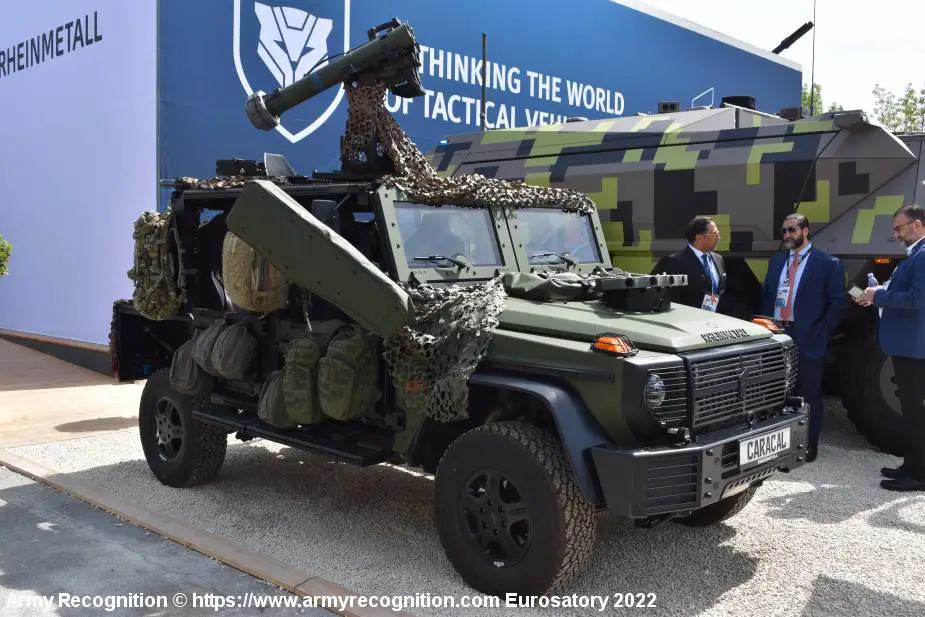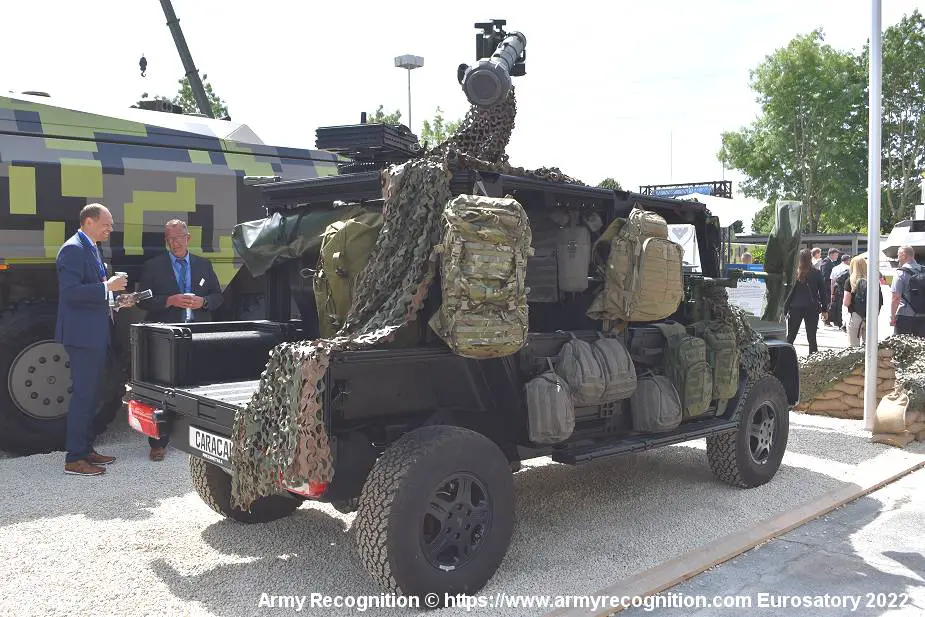Rheinmetall from Germany introduces the Caracal 4x4 airborne and Special Forces vehicle
The German company Rheinmetall has introduced its Light Air Assault Vehicle called Caracal, primarily engineered and created for airborne forces and Special Operations tasks. With its primary focus on airborne and special operations missions, the compact Caracal 4x4 vehicle ensures operators remain nimble and dominant thanks to its speed, low-visibility profile, adaptable protection, and an array of weaponry.
Follow Army Recognition on Google News at this link

The new Caracal airborne and Special Forces 4x4 vehicle designed and developed by the German company Rheinmetall. (Picture source Army Recognition)
Rheinmetall's innovative CARACAL is the company's response to the growing airborne vehicle demands in Germany, the Netherlands, and other global military forces. Built on the latest militarized and proven G-Class chassis, the CARACAL offers a wide range of capabilities that cover the entire airborne operational spectrum. Its compact design enables air transportability as either an internal load or under-slung transport, compatible with the newest CH-47F Chinook and CH-53K King Stallion helicopters. The vehicle boasts exceptional mobility, a lightweight frame, and optional mountable ballistic protection elements.
The G-Class chassis is a robust and versatile platform used in the construction of military and civilian vehicles. It provides a solid foundation for various applications due to its adaptability, reliability, and durability. Known for its off-road capabilities and exceptional performance in demanding conditions, the G-Class chassis is widely utilized by military forces and commercial industries alike. Its compatibility with a range of configurations and mission-specific modifications makes it an ideal choice for constructing vehicles tailored to specific needs.
The CARACAL's unique modular design allows it to serve various roles in airborne operations, ranging from basic troop transport to ambulance services, combat engineer groups, and different logistical applications.
The Caracal features an open-top design and can accommodate up to five military personnel, with two seats in the front and two in the rear. A circular ring mount is located at the top of the vehicle, which can be equipped with a 12.7mm heavy machine gun. The vehicle's rear section serves as a cargo area.
The superstructure, developed and manufactured by ACS (Armored Car Systems), is bolted, allowing for easy disassembly. The foldable ring mount on the top can be rotated within the structure when the vehicle needs to be loaded onto a helicopter.

Caracal vehicle is expanding Rheinmetall's portfolio in the field of light tactical wheeled vehicles, thus addressing the growing demand for specialized and airmobile forces. (Picture source Army Recognition)
The CARACAL Special Forces vehicle boasts impressive technical data, featuring dimensions of 4,350mm in length, 1,810mm in width, and 1,850mm in height. It has a gross vehicle weight of 4,900kg, an air-transportable weight of 4,400 kg or less, and a payload capacity of 1,500 kg.
Performance-wise, the CARACAL can reach a maximum on-road speed of 140 km/h, handle a 60% gradient, and have a 30% side slope. It has a fording depth of 700mm, a climbing ability of 330mm, and a trench crossing capacity of 500mm. The vehicle is also equipped with ABS and ESP systems.
The Caracal is powered by a Euro 3 compliant, 3-liter Mercedes-Benz OM656 6-cylinder inline turbo-diesel engine, generating 183 kW (249 hp) and providing 600 Nm of torque between 1,400 and 2,880 rpm coupled to a Mercedes-Benz 9G-Tronic gearbox. It can reach a maximum road speed of 140 km/h.
For air transportability, up to two vehicles can fit inside HTH CH-47F and CH-53K helicopters, or be carried underslung. The CARACAL is available in various variants, such as transport, reconnaissance, ambulance, command post, and combat engineer group configurations. Optional protection features include a ballistic protection kit and a mine protection kit.




























